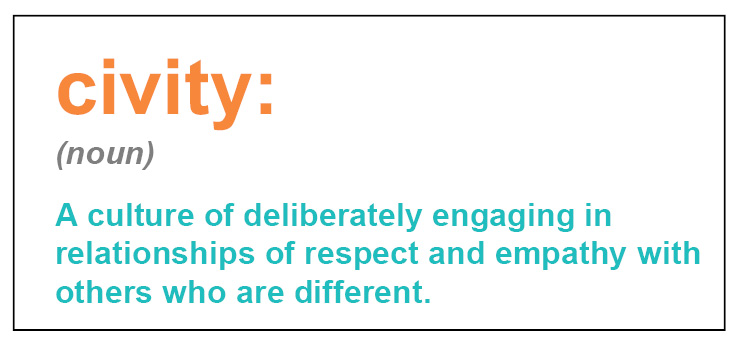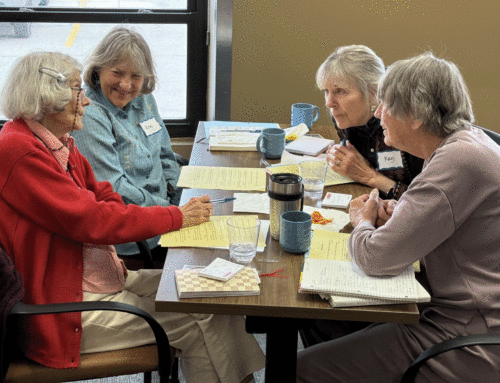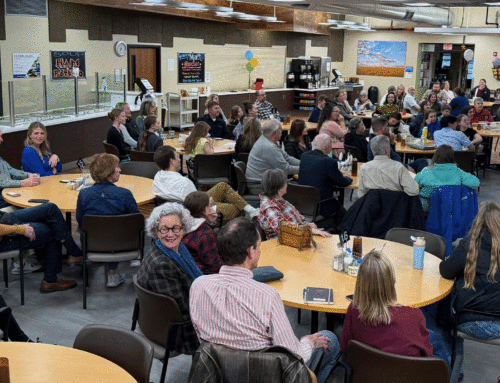Did everyone survive Thanksgiving a few pounds heavier but with familial relationships mostly intact? ‘Tis the season for ugly political discussions over the big bird. There’s nothing quite like mixing alcohol, simmering resentments, buttery carbohydrates, and long-term misunderstandings to make for unfortunate dinner conversations featuring raised voices and pounding fists.
Here at the CVC, we’ve long advocated for civility by promoting Braver Angels and modeling constructive dialogue in Community Conversations. Unfortunately, what we’ve found when recruiting participants for Community Conversations is not just hesitation but fear about how their views will be received. Who can blame them? Very few examples portray qualities like listening for understanding, putting differences on the table, or finding commonalities. After all, showing patience, kindness, compassion, and setting aside judgment doesn’t sell. Yelling, mocking, ridiculing, insulting, and ignoring are where the sizzle lives.
Then we found another arrow for our civility quiver. It’s a process called Civity, a word with Latin roots, defined as a culture of deliberately engaging in relationships of respect and empathy with others who are different. We call it the “conversation before the conversation.” It’s not an icebreaker or a team-building exercise, but Civity does a fantastic job of sharing stories to build connection and understanding. Malka, Palma, and Lucy, our guides to all things Civity, have blown us away with the results.
The CVC wants to use it to bring different group members together. That group could be the City Council, a business department, or even a family. They all hopefully have the greater good of the ‘organization’ as a common denominator; each might work to achieve their version of good differently. Civity uses conversation to spur action.
I decided to try Civity with some of my favorite guinea pigs, my fellow Rotary Club members. I warned them it would be an interactive presentation and worried there would be eye-rolling and hesitation when we started. How wrong I was. I introduced the notion of Civity and its goals as well as our own. Then I showed them a picture of prairie tallgrass. Did you know those suckers grow to at least four feet, but their roots go TEN FEET DEEP? It’s incredible. Fourteen feet of plant and only about a third is showing above ground. Prairie tallgrass is the equivalent of the iceberg analogy. There’s more to people than you can see or assume.
Anyway, we did an exercise where they wrote down what anyone could learn about them just from looking at them. For example, if someone looks at me, they’d see I was white, female, in my mid-50s, and married. Conclusions, right or wrong, would be drawn. Then I had them jot down what people couldn’t see; their below-ground qualities. I shared that I was afraid of heights, couldn’t remember numbers, loathed Christmas music before December 1, and was born in the Midwest. I don’t allow just anyone to know these things, and they’re not immediately apparent. But they describe me far more than what you see.
Once they shared qualities at their table, they paired up with someone they didn’t know well. Before giving them the story starter, I explained the concept of intimacy levels when exchanging ideas with someone. On a scale of 1-10, most people share from 1-2 with people they don’t know well, vs. 8-10 with friends and family. I encouraged my fellow Rotarians to bump their level to 2.5-3 when sharing their story, inviting a response that elicits trust and a hint of vulnerability. I cautioned them not to scare their partner with too much information, just enough to move to a level of authenticity.
After sharing my story of a time when I felt connected to my community (spoiler alert – being a part of starting The Food Group), I gave each person a minute and a half to share theirs. As I walked around the room, I was ecstatic to see each pair alternatively listening with interest or telling their story. There was no lack of enthusiasm on either side – it was so gratifying!
There are more layers to the Civity process, including naming and discussing differences. It sounds scary but is quite freeing and opens new channels for understanding. Ultimately, no matter how opposed you think you are to someone, you’d be amazed at what you have in common. That’s the place to start when you’re going to work together. After all, “a story is the shortest distance between people,” according to Pat Speight. At the CVC, with the help of Civity, we can help you travel that distance, even if it’s just across the dining room table.







Leave A Comment